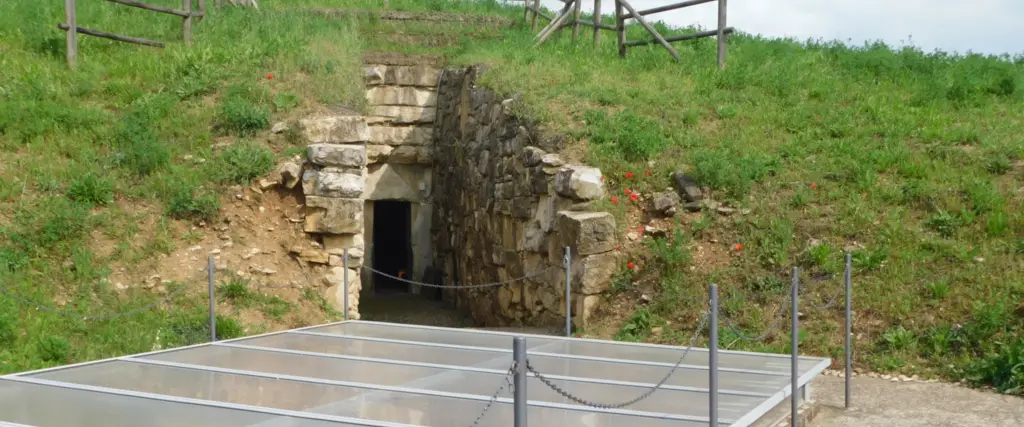
Etruscan Tomb of La Montagnola
Since centuries in Quinto, on the slopes of Monte Morello, there rises La Montagnola (the little mountain) - a mound of earth which due to its regular shape, had long suggested an artificial origin. In 1959, excavation works led to the discovery of an Etruscan tomb among the largest yet known.
The tomb dates back to the second half of the 7th century BC and is part of a series of archaeological sites - including the nearby tomb of La Mula - which testify to an ancient Etruscan presence in what today is the territory of Sesto Fiorentino.
It is a thòlos tomb made up almost entirely of large blocks of alberese limestone, and buried beneath an imposing mound of earth. Roughly circular at its base, the mound has a perimeter of about 125 meters, and a diameter of about 70 meters.
The interior of the tomb is accessed from the external dromos, an open-air corridor made of stone blocks. The corridor extends for 14 meters up to the entrance of the internal dromos, which continues inside for about 7 meters more.
Facing each other, two rectangular burial chambers open out from the middle of the internal dromos. By the entrance of one of these chambers, there is a large stone slab which feature - vaguely visible to the naked eye - traces of paintings depicting animals and ornamental motifs, along with some writings in the distinctive Etruscan alphabet.
The internal dromos leads to the entrance of the thòlos - a large circular burial chamber, with a diameter of about 5 meters and of equal height. This chamber is constituted by an ogival dome, made up of massive blocks of alberese limestone. At the centre of the thòlos lies a pillar made of tuff blocks, originally covered with clay and dark stucco; the pillar has no load-bearing function: it could have had, rather, an astronomical or religious function.
The tomb was found to have already been desecrated in the centuries before its discovery. In spite of this, archaeologists recovered a number of objects which, due to the quality of the materials and decorations, testify to the wealth and rank of the proprietary family. These objects are identified with the Orientalizing Etruscan period (spanning from the 7th to the 6th century BC), and are now preserved in the National Archeological Museum of Florence.
In 2001, during works of renovation, the foundations of a secondary tomb were discovered right before the entrance of the main tomb. Dating to the first half of the 7th century BC, and much more modest in size, this second tomb consisted of a single rectangular cell subdivided into two rooms.
Foto: Comune di Sesto Fiorentino